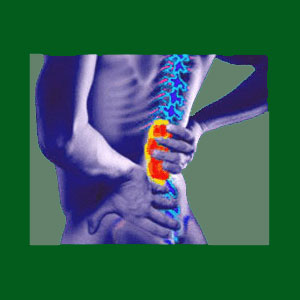
Spondylolisthesis L4 is the second most common location for listhesis to occur in the vertebral column, bested only by its demonstration at L5. Lumbar 4 vertebral bone presentations are usually singular listhesis conditions, but in some instances can exist along with L5, creating a multiple spondylolisthesis diagnosis.
L4 is a spinal level that suffers serious structural deterioration as part of its normal lifespan. Similarly, the discs that surround L4 also suffer degeneration and arthritic activity from a relatively early age. Lumbar 4 is often the site of injury and lower back pain related to a selection of causative processes.
This simple article details spondylolisthesis at the L4 vertebral level. We will explore the region’s susceptibility to vertebral migration and how lumbar 4 listhesis conditions might exist along with L5 spondylolisthesis, as well.
Spondylolisthesis L4 Anatomy
L4 is the second individual vertebral bone above the sacrum and joins the surrounding vertebral bones of L3 and L5 by the attaching L3/L4 and L4/L5 spinal discs, respectively. The L4 vertebral level is well known to experience early onset degeneration including disc desiccation, common intervertebral bulging and the accumulation of osteoarthritis by the middle years of adulthood.
L4 is in a location within the lumbar curvature that allows it to move considerably when it becomes detached from the facet joints. This fact is related to spinal functionality and the mechanics of spinal flexion in the lumbar region. Therefore, some L4 case profiles can become severe and might require early and more dramatic interventions than examples of comparable severity listhesis at L5.
Spondylolisthesis Facts for Spinal Level L4
L4 is less susceptible to slippage than its lower neighbor L5. However, some particular circumstances can create L4 spondylolisthesis rather than L5, such as less common pars interarticularis defects, traumatic injury or excessive degeneration at L4 and other idiopathic factors.
When significant listhesis does occur at L4, there is a chance that the spinal nerve roots at either L4 and/or L5 might become compressed within the neural foraminal spaces, unilaterally or bilaterally. There is also the chance for far worse compression scenarios to affect all the spinal nerve roots of the cauda equina within the central vertebral canal space. Both of these scenarios will likely be symptomatic and might necessitate surgical intervention.
Spondylolisthesis L4 and L5
Occasionally, multiple spondylolisthesis might affect the adjacent L4 and L5 vertebrae. Although multiple vertebral migration is rare, this particular combination is the most often seen variety clinically. Remember that multiple listhesis does not always have to affect adjacent vertebral bones, with some patients expressing migration of bones that do not attach directly to one another and often including L5, L4, C7, C6 or C5.
Statistically, multiple adjacent spondylolisthesis is more often treated surgically than singular listhesis issues. This is strange, considering that patient citations do not implicate multiple adjacent listhesis as being any more often symptomatic than singular listhesis and still usually maintains grade 1 or grade 2 classifications. However, there is some concern that multiple vertebral bones that migrate together further degrade the overall stability of the spine.
Spondylolisthesis > Isthmic Spondylolisthesis > Spondylolisthesis L4



